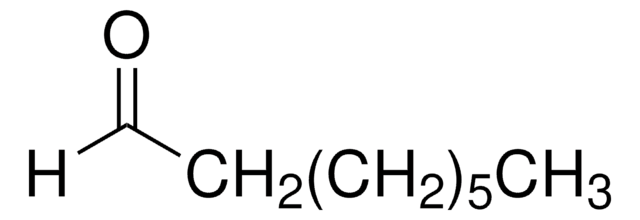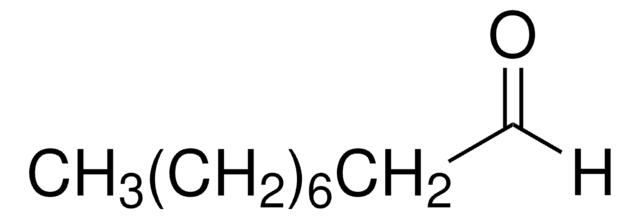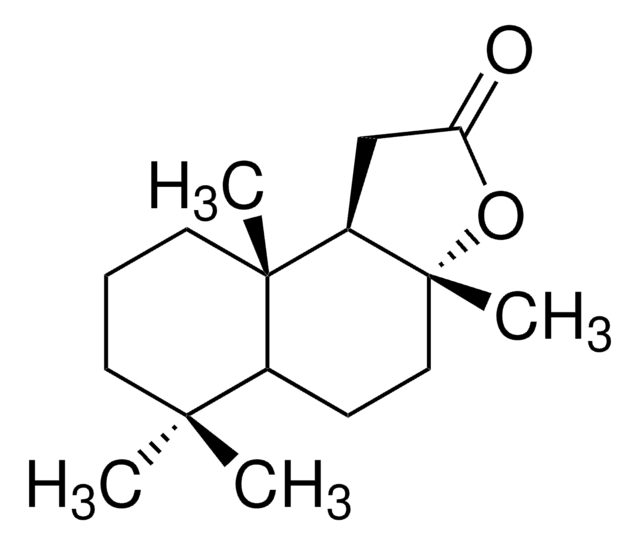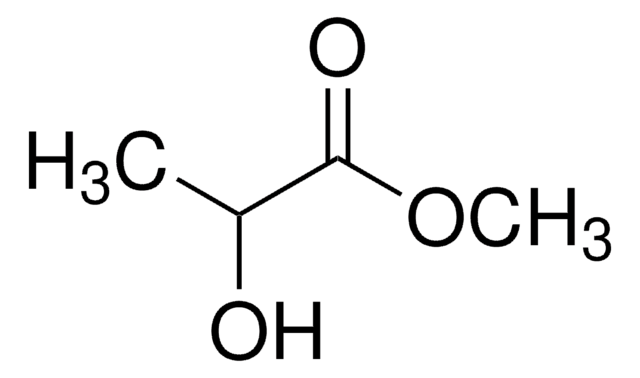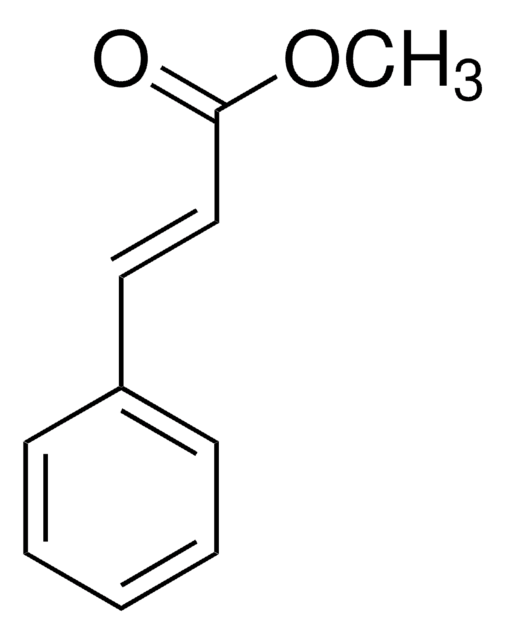W279714
Octanal
natural, ≥95%, FCC, FG
Sinonimo/i:
Aldehyde C8, Caprylic aldehyde, Octyl aldehyde
About This Item
Prodotti consigliati
Grado
FG
Fragrance grade
Halal
Kosher
natural
agenzia
follows IFRA guidelines
meets purity specifications of JECFA
Conformità normativa
EU Regulation 1223/2009
EU Regulation 1334/2008 & 178/2002
FCC
FDA 21 CFR 172.515
Tensione di vapore
2 mmHg ( 20 °C)
850 mmHg ( 25 °C)
Saggio
≥95%
Caratteristiche più verdi
Less Hazardous Chemical Syntheses
Use of Renewable Feedstocks
Learn more about the Principles of Green Chemistry.
sustainability
Greener Alternative Product
Indice di rifrazione
n20/D 1.421 (lit.)
P. ebollizione
171 °C (lit.)
Punto di fusione
12-15 °C (lit.)
Densità
0.82 g/mL at 25 °C (lit.)
applicazioni
flavors and fragrances
Documentazione
see Safety & Documentation for available documents
Allergene alimentare
no known allergens
Allergene in fragranze
no known allergens
Categoria alternativa più verde
Organolettico
fatty; green; orange; waxy; citrus
Stringa SMILE
[H]C(=O)CCCCCCC
InChI
1S/C8H16O/c1-2-3-4-5-6-7-8-9/h8H,2-7H2,1H3
NUJGJRNETVAIRJ-UHFFFAOYSA-N
Cerchi prodotti simili? Visita Guida al confronto tra prodotti
Descrizione generale
Avvertenze
Warning
Indicazioni di pericolo
Consigli di prudenza
Classi di pericolo
Aquatic Chronic 3 - Eye Irrit. 2 - Flam. Liq. 3 - Skin Irrit. 2
Codice della classe di stoccaggio
3 - Flammable liquids
Classe di pericolosità dell'acqua (WGK)
WGK 2
Punto d’infiammabilità (°F)
125.6 °F - closed cup
Punto d’infiammabilità (°C)
52 °C - closed cup
Dispositivi di protezione individuale
Eyeshields, Faceshields, Gloves, type ABEK (EN14387) respirator filter
Scegli una delle versioni più recenti:
Possiedi già questo prodotto?
I documenti relativi ai prodotti acquistati recentemente sono disponibili nell’Archivio dei documenti.
I clienti hanno visto anche
Global Trade Item Number
| SKU | GTIN |
|---|---|
| W279714-100G | |
| W279714-100G-K | 4061838181121 |
| W279714-1KG | |
| W279714-1KG-K | 4061838192189 |
| W279714-4KG | |
| W279714-4KG-K | 4061838108050 |
| W279714-SAMPLE | |
| W279714-SAMPLE-K | 4061838181138 |
Il team dei nostri ricercatori vanta grande esperienza in tutte le aree della ricerca quali Life Science, scienza dei materiali, sintesi chimica, cromatografia, discipline analitiche, ecc..
Contatta l'Assistenza Tecnica.